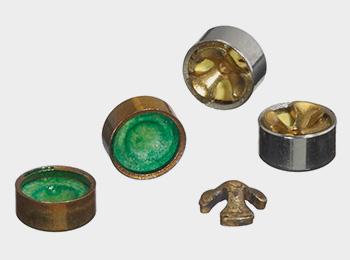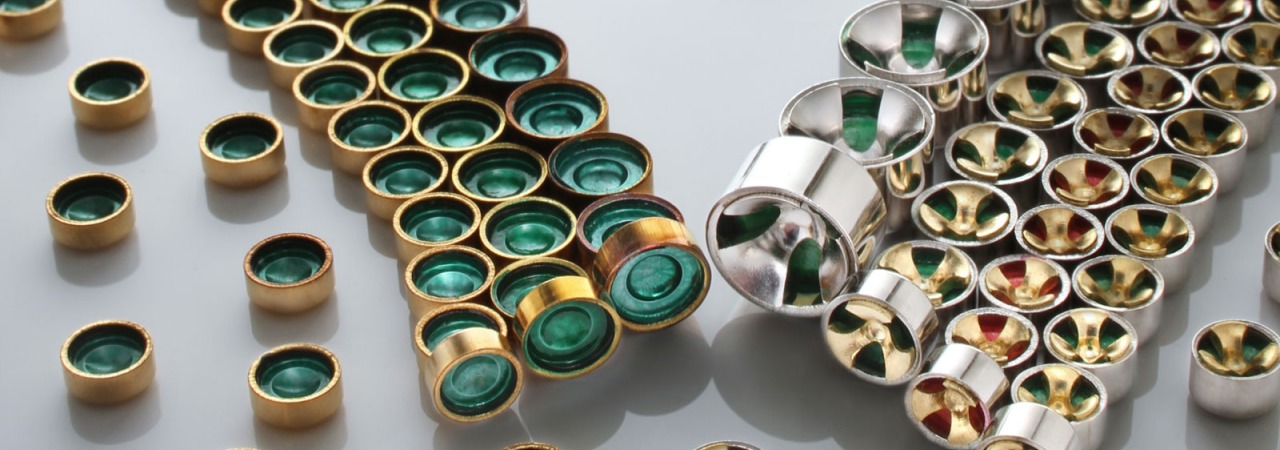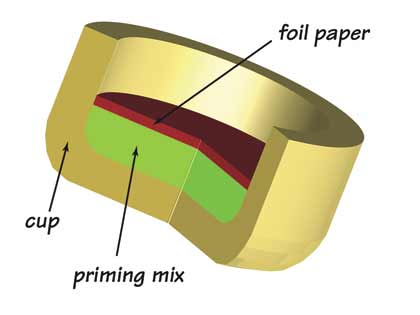Excitement About Small Pistol Primers
Wiki Article
All About Federal Primers
Table of Contents4 Easy Facts About Cci Primers DescribedUnknown Facts About Primers For SaleThe 6-Minute Rule for Primers In StockHow Reloading Primers can Save You Time, Stress, and Money.Excitement About Primers In Stock
Component of the weapon cartridge for initiating propellant combustion In firearms and artillery, the guide () is the chemical and/or device liable for starting the propellant burning that will certainly push the projectiles out of the weapon barrel. In early black powder guns such as muzzleloaders, the primer was essentially the same chemical as the main propellant (albeit usually in a finer-powdered form), but put into an outside flash pan, where it could be ignited by an ignition resource such as a slow suit or a flintlock Some muzzleloaders have primers like cap gun caps.
Instances consist of hand gun cartridges, rifle cartridges, and also shotgun coverings. Bigger artillery items in comparison usually utilize electrical priming. In artillery the guides are frequently a different component, positioned inside the barrel to the rear of the primary propellant chargebut there are various other instances of weapons, consisting of as an example some automated weapons, made to fire cartridges with important electrical guides.
The Ultimate Guide To Rifle Primers

With the arrival of hand-held firearms, this came to be an unfavorable method of firing a weapon. Holding a burning stick while attempting to put a cost of black powder carefully down a barrel is unsafe, and attempting to hold the weapon with one hand while all at once intending at the target as well as looking for the touchhole makes it really difficult to fire accurately. The very first effort to make the process of shooting a small arm simpler was the "matchlock".
, and dried. After the weapon was packed and the touchhole primed with powder, the burning idea of the match was positioned so that the lock would certainly bring it right into call with the touchhole.
Top Guidelines Of Reloading Primers
This brought the match down to the touchhole, igniting the powder - https://www.polygon.com/users/relodprim3rs. resource With careful attention, the slow-burning match might be maintained burning for long durations of time, and also the use of the lock mechanism made relatively accurate fire possible. The next change in ignition modern technology was the "wheel-lock".

The covered flashpan likewise gave some capacity to withstand poor weather. federal primers. Wind, rain, and wet weather would provide a matchlock ineffective, but a wheel-lock that was loaded as well as waterproofed with a little bit of grease around the flashpan could be fired under a lot of conditions. The wheel-lock delighted in just a short period of appeal prior to being superseded by a less complex, a lot more durable layout.
The Definitive Guide to Reloading Primers
As the name indicates, the flintlock used flint as opposed to iron pyrite. The flint was kept in a spring-loaded arm, called the "penis" from the resemblance of its activity to a pecking chicken. The dick revolved through about a 90-degree arc and was held in the tensioned, or "cocked" setting by a trigger. https://0rz.tw/wJAMC.The "half-cock" placement held the penis midway back, and also made use of a deep notch to ensure that shooting would not launch the cock. Half-cock was a safety and security setting, made use of when packing, storing or bring a crammed flintlock. The "full-cock" setting held the cock completely back and also was the placement where the weapon was fired.
It worked as both a flashpan cover and a steel striking surface area for the flint. The frizzen was pivoted as well as spring-loaded to make sure that it would secure the open or shut placement. When closed, the striking surface was placed so that the flint would certainly strike at the correct angle to generate a trigger.
The Best Strategy To Use For Primers For Sale
The flintlock system was less complex and stronger than the wheel-lock, and also the flint and steel gave a good, reputable source of ignition. The flintlock remained in military service for over 200 years, and flintlocks are still made today for historical re-enactments as well as muzzle-loading target competition, and for hunters who delight in the added obstacle that the flintlock supplies.Percussion ignition was developed by Scottish clergyman Rev. Alexander John Forsyth in 1807 yet needed even more refinements before it was slowly approved in the 1820s to 1830s. By the middle of the 19th century, the percussion or caplock system was well established. It was taken on by both sides in the American Civil Battle, as it was less complex and also extra trustworthy than the flintlock.
The flashpan as well as frizzen were gotten rid of as well as changed by a tiny, hollow straight cyndrical tube (drum) screwed into the bored-out and also tapped flash opening and also carrying a "nipple area" over which the cap can be fitted. A "hammer" which also had half-cock (for filling as well as using the cap) and also full-cock settings replaced the cock.
Report this wiki page